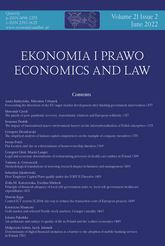Forecasting the directions of the EU sugar market development after limiting government intervention
Forecasting the directions of the EU sugar market development after limiting government intervention
Author(s): Anna Budzyńska, Mirosław UrbanekSubject(s): Government/Political systems, Transformation Period (1990 - 2010), Present Times (2010 - today), EU-Accession / EU-DEvelopment, Financial Markets
Published by: Wydawnictwo Naukowe Uniwersytetu Mikołaja Kopernika
Keywords: sugar market; government intervention; sugar quotas; forecasting;
Summary/Abstract: Motivation: The EU sugar industry is one of the most regulated industry which is subject to import duties, subsidies and quotas. Government intervention in sugar markets significantly affects sugar production, consumption and trade. The GATT/WTO negotiations led to the commencement of the liberalization process in the EU sugar market, and initiated a number of reforms aimed at abolishing government support. Consequently, the sugar market in the EU has undergone considerable changes. Proper recognition of the directions of changes will contribute to reducing the difficulties of entities operating on the global sugar market. Aim: The purpose of this publication is to present the forecasts made in 2017 regarding the main categories characterizing the EU sugar market and to verify their validity following the analysis of the actual data. The work uses the forecasts made for 2017–2020 based on empirical data collected from 1993–2016, and then verifies their validity when set against the real data. Results: The results of the research showed that statistical models are not able to predict correctly not only the forecasted values, but also the directions of their changes. The range of indicators of forecast errors was almost 40 percentage points, which reduced their credibility. The Pearson correlation index of over 0.7 indicated a significant correlation between the real data and the forecast values for the consumption or sugar beet harvest, while interpreting the discrepancy coefficient index, which did not exceed 1 for the forecast of the sugar production volume. This allows to conclude that this forecast shows the smallest differentiation in comparison to the actual data obtained.
Journal: Ekonomia i Prawo. Economics and Law
- Issue Year: 21/2022
- Issue No: 2
- Page Range: 297-315
- Page Count: 20
- Language: English

